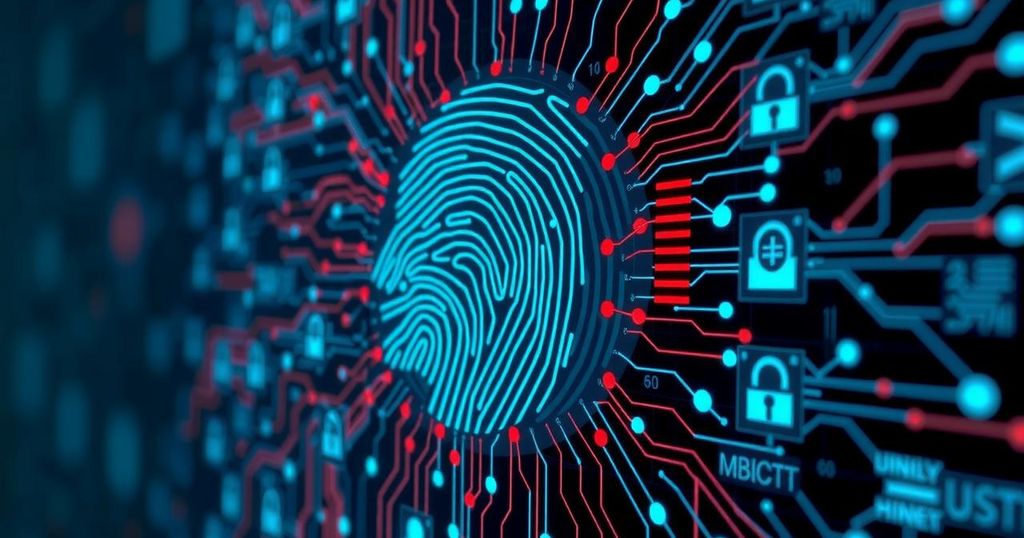Biometric verification leverages unique biological traits to secure identities, offering enhanced security, convenience, and reduced fraud risk, especially in sectors like banking and healthcare. This technology is essential for modern digital interactions but faces challenges related to privacy, data security, and implementation costs as it evolves.
In today’s digital age, biometric verification has emerged as a critical component in establishing secure identities. Utilizing unique biological attributes like fingerprints, facial patterns, or voice recognition, this technology offers a robust alternative to traditional passwords and PINs. As the digital identity landscape expands, particularly in banking, e-commerce, and government sectors, biometric systems are set to enhance personal data security significantly while also streamlining user experiences.
Biometric verification refers to the method of validating an individual’s identity through their distinct biological characteristics. These traits are inherently unique and nearly impossible to replicate, thus providing a higher level of security than conventional identity verification methods. For example, the use of fingerprint sensors on smartphones or facial recognition methods at border controls exemplifies how biometrics can facilitate a swift and efficient means of identity confirmation, reducing the risks of identity theft and unauthorized access.
The primary biometric verification techniques include:
– Fingerprint Recognition: Widely deployed in various devices, this method is prized for its accuracy and speed, making it ideal for daily transactions.
– Facial Recognition: Increasingly prevalent in sectors like online banking and social media, it enables quick customer authentication based on facial features.
– Iris and Retinal Scanning: This high-security method analyzes the distinct patterns in the eye, suitable for defense and research settings.
– Voice Recognition: Commonly used in mobile banking, it translates voice characteristics into secure authentication requirements.
– Behavioral Biometrics: By focusing on user interaction patterns, including typing speed and mouse movements, this emerging field enhances security through behavioral analysis.
Despite its advantages, biometric verification is not without challenges. Privacy concerns loom large as the collection of sensitive biometric data presents risks of invasion and misuse. Cybersecurity threats remain a concern since compromised biometric information, unlike passwords, cannot be changed. Additionally, some biometric systems face accuracy issues when deployed across diverse populations, particularly with facial recognition technology. Finally, the cost of implementing biometric systems can be prohibitive for smaller enterprises.
Biometric verification applications are diverse and growing across multiple sectors:
– Banking: Biometrics help to strengthen security in transaction approvals, ensuring only authorized users can access services through advanced technology.
– Healthcare: By safeguarding sensitive patient data and ensuring accurate patient identification, biometrics minimizes errors in medical settings.
– Travel and Hospitality: Facial recognition systems expedite processes like immigration and hotel check-ins, ensuring efficiency and security.
– Retail and E-commerce: Businesses implement biometric checks during online transactions to reduce financial fraud, promoting a seamless shopping experience.
Looking ahead, the trajectory of biometric verification aligns with the global shift towards digital identification. Innovations in AI and machine learning promise to refine biometric systems, making them more accurate and versatile across various applications. This progression may lead to a world where biometric technology is commonplace in secure online interactions, such as banking and access to sensitive portals.
As biometric verification continues to evolve, the significant challenge will be balancing technological advancements with ethical considerations surrounding user privacy, security, and equity in access. Companies like Idenfo Direct are pioneering these solutions, offering businesses a way to navigate this complex environment while ensuring customer confidentiality and safety in an increasingly connected digital landscape.
Biometric verification represents a technological advance in identity security that leverages unique biological characteristics for user verification. Its rise parallels the dramatic increase in digital transactions and data sharing, necessitating systems that can assure both security and ease of access. The vulnerabilities of traditional password systems have prompted industries to seek more robust solutions that biometrics can provide by delivering not only security but also improving user experiences. As digital identities proliferate, especially in sensitive sectors like banking and healthcare, biometric verification is becoming essential in the modern security landscape.
In conclusion, biometric verification stands as a transformative solution in digital identity security, offering significant advantages over traditional verification methods. Its unique attributes provide enhanced security, operational efficiency, and reduced fraud risks across multiple sectors. However, challenges relating to privacy, accuracy, and implementation costs necessitate ongoing attention to bolster public trust. As the technology continues to advance, it will likely become a standard in ensuring safe and seamless user experiences in a wide array of applications.
Original Source: techbullion.com






